- Campus Flora
- ✓ Herbs
- ✓ Shrubs
- ✓ Trees
- ✓ Contributers
CAMPUS HERBS
Biodiversity in our school
| Family | Amaranthaceae |
|---|---|
| Taxonomic position | Plantae > Tracheophyta > Caryophyllales > Amaranthaceae > Aerva > Aerva lanata |
| Common Name | Mountain knotgrass |
| Vernacular Name | ചെറൂള |
| Habit | perennial herbaceous plant |
| Habitat | often seen growing in semi-arid regions |
| Nativity | Africa, Asia, and Australia |
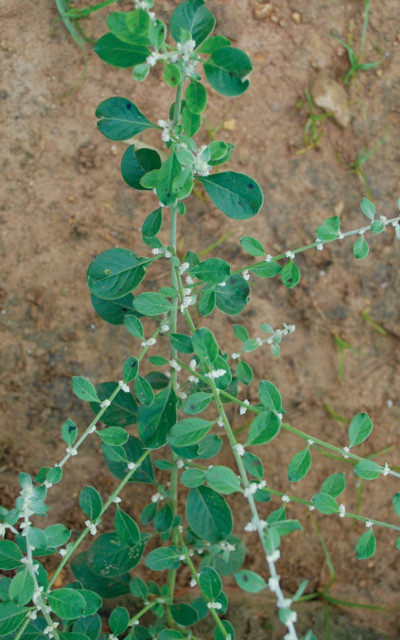 Description: Aerva lanata (L.), also known as mountain knotgrass or woolly aerva, is a species of flowering plant in the Amaranthaceae family. It is native to various regions of Africa,Asia, and Australia.This plant is a perennial herb that typically grows in dry and arid habitats such as sandy soils, rocky areas, and wastelands. It has erect stems covered with dense woolly hairs, giving it a distinctive appearance.The leaves are simple,alternate,and lanceolate, also covered with woolly hairs. Aerva lanata produces small, inconspicuous flowers arranged in clusters at the tips of the stems.
Description: Aerva lanata (L.), also known as mountain knotgrass or woolly aerva, is a species of flowering plant in the Amaranthaceae family. It is native to various regions of Africa,Asia, and Australia.This plant is a perennial herb that typically grows in dry and arid habitats such as sandy soils, rocky areas, and wastelands. It has erect stems covered with dense woolly hairs, giving it a distinctive appearance.The leaves are simple,alternate,and lanceolate, also covered with woolly hairs. Aerva lanata produces small, inconspicuous flowers arranged in clusters at the tips of the stems.
| Uses | Traditional Medicine |
|---|---|
| Flowering and Fruiting | flower during the warmer months of the year.may extend into late summer or early autumn. |
| Distribution | India, Sri Lanka, Bangladesh, northern parts of Australia , South Africa, Zimbabwe, and Botswana. |
| Conservation Status | Aerva lanata is not currently considered threatened or endangered |
| References | https://indiabiodiversity.org https://powo.science.kew.org |
| Family | Liliaceae |
|---|---|
| Taxonomic position | Plantae > Tracheophyta > Liliopsida >Asparagales>Xanthorrhoeaceae >Aloe >Aloe vera (L.) Burm.f. |
| Common Name | Aloe vera |
| Vernacular Name | കറ്റാർവാഴ |
| Habit | Herb |
| Habitat | Hilly areas, thicklets |
| Nativity | Saudi Arabia, Yemen, UAE, Kuwait |
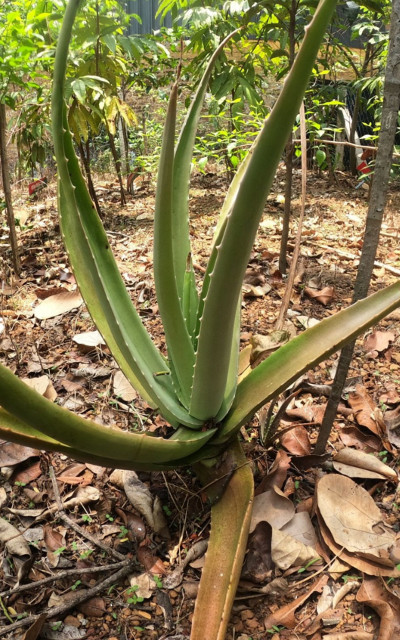 Description: Aloe vera is a short-stemmed shrubby aloe, frequently suckering and forming dense clumps. Leaves: The leaves are succulent, erect, forming a dense rosette. The leaves are greyish green, growing to about 50 cm long, with margins that are pinkish with many small spines. The leaf surfaces are sometimes marked with white flecks or spots. The flowers are yellow, tubular with anthers and stigma protruding. The flowers are borne in cylindrical racemes on a branched panicle.
Description: Aloe vera is a short-stemmed shrubby aloe, frequently suckering and forming dense clumps. Leaves: The leaves are succulent, erect, forming a dense rosette. The leaves are greyish green, growing to about 50 cm long, with margins that are pinkish with many small spines. The leaf surfaces are sometimes marked with white flecks or spots. The flowers are yellow, tubular with anthers and stigma protruding. The flowers are borne in cylindrical racemes on a branched panicle.
| Uses | Used in Folk medicine |
|---|---|
| Flowering and Fruiting | Spring or summer |
| Distribution | Global Distribution. India: Assam |
| Conservation Status | Not known |
| References | https://indiabiodiversity.org https://powo.science.kew.org/ |
| Family | Oxalidaceae |
|---|---|
| Taxonomic position | Plantae > Oxalidales > Oxalidaceae > Biophytum > Biophytum sensitivum(L.)DC. |
| Common Name | Little tree plant. |
| Vernacular Name | മുക്കുറ്റി |
| Habit | Herb |
| Habitat | Grasslands, roadsides and agricultural fields. |
| Nativity | Asia, Africa, and Australia. |
 Description: Biophytum sensitivum, also known as the sensitive plant or Little tree plant, is a small flowering plant.These are annuals which grow upto 25 cm in height. The base is woody. Stem is slender to robust, simple and at the apex is covered by dense thick hair. There are upto 13 leaves, the rachis is slender, moderately covered by dense thick hair, the leaflets are 6-14 pairs, the leaflet blades are obovate-oblong base is almost symmetric, usually smooth and sometimes covered by trichomes. There are several flowers on the umbels, the peduncle is 2-7 cm and is subequal to the length of leaf.
Description: Biophytum sensitivum, also known as the sensitive plant or Little tree plant, is a small flowering plant.These are annuals which grow upto 25 cm in height. The base is woody. Stem is slender to robust, simple and at the apex is covered by dense thick hair. There are upto 13 leaves, the rachis is slender, moderately covered by dense thick hair, the leaflets are 6-14 pairs, the leaflet blades are obovate-oblong base is almost symmetric, usually smooth and sometimes covered by trichomes. There are several flowers on the umbels, the peduncle is 2-7 cm and is subequal to the length of leaf.
| Uses | Traditional Medicine and Anti-inflammatory Properties |
|---|---|
| Flowering and Fruiting | Flowering and fruiting from July-December. |
| Distribution | Asia,Sub-Saharan Africa and northern parts of Australia |
| Conservation Status | It is not typically considered endangered or threatened. |
| References | https://indiabiodiversity.org https://powo.science.kew.org |
| Family | Caricaceae |
|---|---|
| Taxonomic position | Plantae >Tracheophyta >Magnoliopsida > Capparales >Caricaceae >Carica >Carica papaya L. |
| Common Name | Papaya |
| Vernacular Name | പപ്പായ |
| Habit | woody herb |
| Habitat | low land land tropical areas |
| Nativity | Belize, Colombia, Costa Rica |
 Description: Technically an evergreen tree-like herb, not a true tree due to its lack of woody tissue. Grows 2-10 meters tall with a single, unbranched hollow stem. Large, spirally arranged leaves clustered near the top of the stem. The leaves are deeply lobed with a palm-like appearance and can reach up to 75 cm in diameter.
Description: Technically an evergreen tree-like herb, not a true tree due to its lack of woody tissue. Grows 2-10 meters tall with a single, unbranched hollow stem. Large, spirally arranged leaves clustered near the top of the stem. The leaves are deeply lobed with a palm-like appearance and can reach up to 75 cm in diameter.
| Uses | Improve heart health, delicious, used as a system of medicine in Ayurveda, Folk medicine, Homoeopathy, Folk medicine, Unani, Siddha, Modern medicine, Traditional chinese medicine |
|---|---|
| Flowering and Fruiting | throughout the year It takes around 6-9 months for the papaya fruit to mature and reach its delicious, ripe stage. |
| Distribution | Assam, Bihar, Gujarat, Madhya Pradesh, Maharastra,kerala; America, Australia. |
| Conservation Status | Data deficient (DD) |
| References | https://indiabiodiversity.org https://powo.science.kew.org |
| Family | Fabaceae |
|---|---|
| Taxonomic position | Plantae > Fabales > Fabaceae >Crotalaria >Crotalaria retusa L. |
| Common Name | Rattleweed |
| Vernacular Name | കിലുക്കിച്ചെടി |
| Habit | Herb |
| Habitat | Open,Sunny areas |
| Nativity | Asia, Africa, Australia |
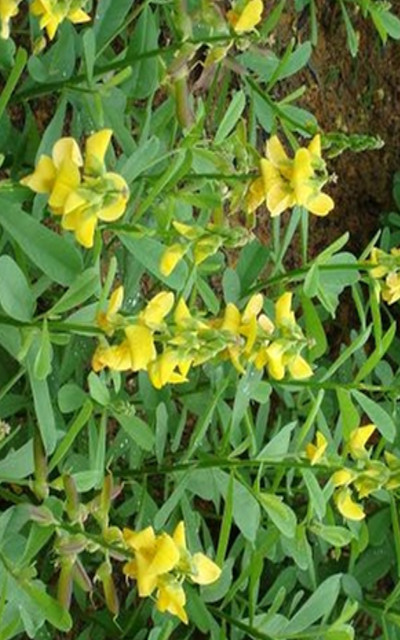 Description: It's an annual herb that typically grows 2-5 feet tall with erect, green, angular branches. The leaves are soft, dark green on top and lighter underneath, with an alternate arrangement and a narrowly oblong or wedge shape.The bright yellow flowers bloom in loose clusters at the ends of the stems. The thin-walled pods grow spaced out along the stems and turn dark purple to black when ripe. Each pod contains around 18-20 small brown seeds.
Description: It's an annual herb that typically grows 2-5 feet tall with erect, green, angular branches. The leaves are soft, dark green on top and lighter underneath, with an alternate arrangement and a narrowly oblong or wedge shape.The bright yellow flowers bloom in loose clusters at the ends of the stems. The thin-walled pods grow spaced out along the stems and turn dark purple to black when ripe. Each pod contains around 18-20 small brown seeds.
| Uses | Green manure,Fiber Crop,Folk Medicine |
|---|---|
| Flowering and Fruiting | September-January |
| Distribution | Asia, Africa and Australia |
| Conservation Status | Not known |
| References | https://indiabiodiversity.org https://powo.science.kew.org |
| Family | Rubiaceae |
|---|---|
| Taxonomic position | Plantae >Gentianales > Rubiaceae > Oldenlandia > Oldenlandia corymbosa L. |
| Common Name | clustered mille graines |
| Vernacular Name | പർപ്പടകപ്പുല്ല് |
| Habit | low-growing, spreading herb |
| Habitat | agricultural fields, and open woodlands. |
| Nativity | Africa, Asia, Australia, and the Americas. |
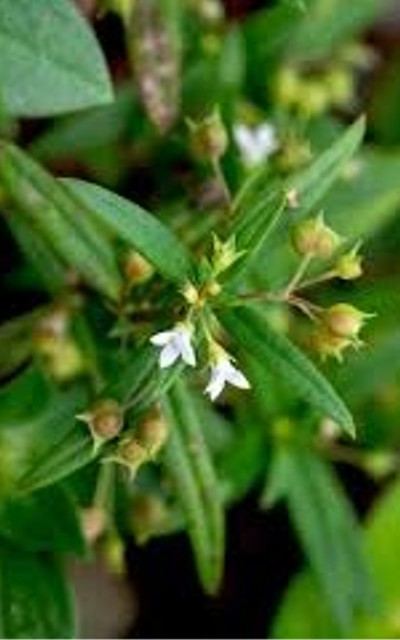 Description: Oldenlandia corymbosa L., commonly known as clustered millet graines or oldenlandia, is a species of flowering plant in the Rubiaceae family. It is native to tropical and subtropical regions worldwide, including parts of Africa, Asia, Australia, and the Americas. It has small white flowers and opposite, lance-shaped leaves.
Description: Oldenlandia corymbosa L., commonly known as clustered millet graines or oldenlandia, is a species of flowering plant in the Rubiaceae family. It is native to tropical and subtropical regions worldwide, including parts of Africa, Asia, Australia, and the Americas. It has small white flowers and opposite, lance-shaped leaves.
| Uses | Antimicrobial Activity , Anti-inflammatory Effects |
|---|---|
| Flowering and Fruiting | flowering and fruiting times may vary depending on factors such as local climate, environmental conditions, and geographical location. |
| Distribution | Africa,Asia,Australia,Americas |
| Conservation Status | It is not considered threatened on a global scale |
| References | https://indiabiodiversity.org https://powo.science.kew.org |
| Family | Phyllanthaceae |
|---|---|
| Taxonomic position | Plantae> Tracheophyta> Equisetopsida > Malpighiales > Phyllanthaceae>Phyllanthus>Phyllanthus amarus Schumach. & Thonn. |
| Common Name | stonebreaker |
| Vernacular Name | കീഴാർനെല്ലി |
| Habit | Herb |
| Habitat | Disturbed areas, grasslands, forests, and along roadsides. |
| Nativity | Native to tropical and subtropical regions of the world |
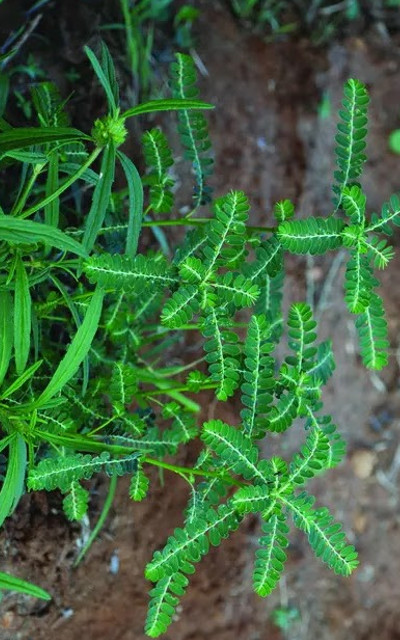 Description: Phyllanthus amarus Schumach. & Thonn., commonly known as Phyllanthus or stonebreaker, is a small annual herbaceous plant belonging to the Phyllanthaceae family. Phyllanthus amarus is a slender, herbaceous plant that typically grows up to about 30 to 60 centimeters in height. The leaves are small, alternate, and elliptical in shape, with smooth margins. They are arranged in a spiral pattern along the stems.The flowers are tiny and inconspicuous, greenish-yellow to reddish in color, and often clustered in the leaf axils. The fruit of Phyllanthus amarus is a small, spherical capsule containing seeds
Description: Phyllanthus amarus Schumach. & Thonn., commonly known as Phyllanthus or stonebreaker, is a small annual herbaceous plant belonging to the Phyllanthaceae family. Phyllanthus amarus is a slender, herbaceous plant that typically grows up to about 30 to 60 centimeters in height. The leaves are small, alternate, and elliptical in shape, with smooth margins. They are arranged in a spiral pattern along the stems.The flowers are tiny and inconspicuous, greenish-yellow to reddish in color, and often clustered in the leaf axils. The fruit of Phyllanthus amarus is a small, spherical capsule containing seeds
| Uses | Traditional Plant and Health Product |
|---|---|
| Flowering and Fruiting | throughout the year |
| Distribution | Africa, Asia, and the Americas. |
| Conservation Status | not listed on the IUCN Red List. |
| References | https://indiabiodiversity.org https://powo.science.kew.org |
| Family | Piperaceae |
|---|---|
| Taxonomic position | Plantae>Tracheophyta >Magnoliopsida >Piperales >Piperaceae >Piper >Piper nigrum L. |
| Common Name | Pepper |
| Vernacular Name | കുരുമുളക് |
| Habit | Perennial Woody Wine |
| Habitat | Cultivated, forest clearings |
| Nativity | Madagascar |
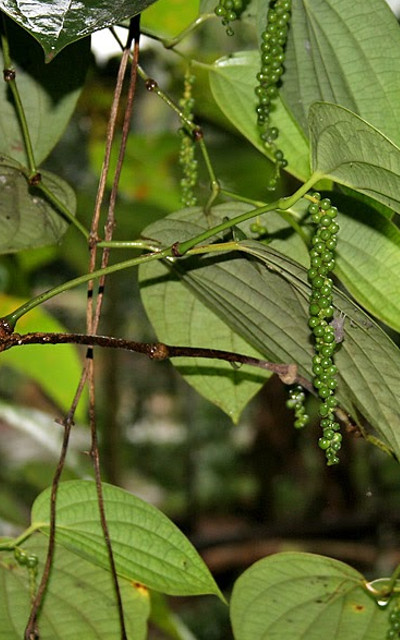 Description: It is commonly known as black pepper, is a flowering vine in the Piperaceae family cultivated for its fruit, the peppercorn, which is dried and used as a spice and seasoning.Stout woody climbers, climbing up to 8 m high. Rooting at nodes, glabrous.
Description: It is commonly known as black pepper, is a flowering vine in the Piperaceae family cultivated for its fruit, the peppercorn, which is dried and used as a spice and seasoning.Stout woody climbers, climbing up to 8 m high. Rooting at nodes, glabrous.
| Uses | Used as Firewood and medicines |
|---|---|
| Flowering and Fruiting | March-August |
| Distribution | India: Assam, Kerala, Meghalaya, Tamil Nadu |
| Conservation Status | Not known |
| References | https://indiabiodiversity.org https://powo.science.kew.org |